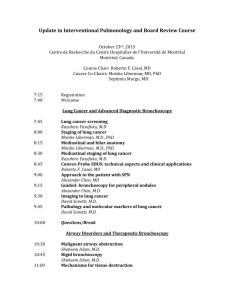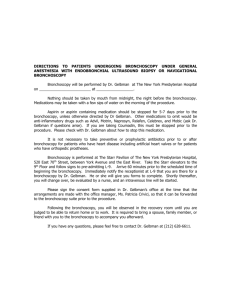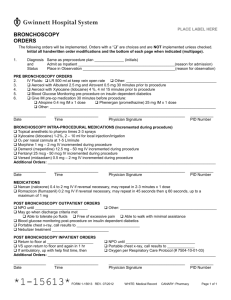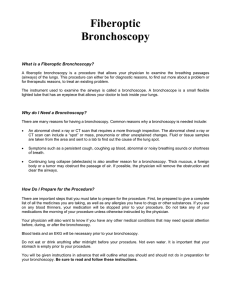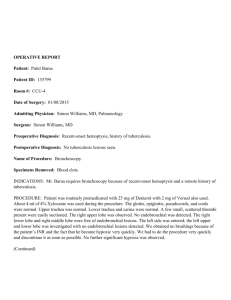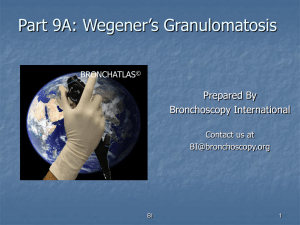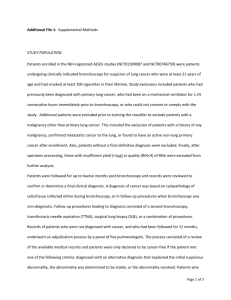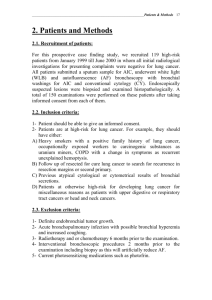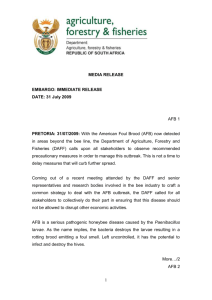The Application Autofluorescent Bronchoscopy for the Detection of
advertisement
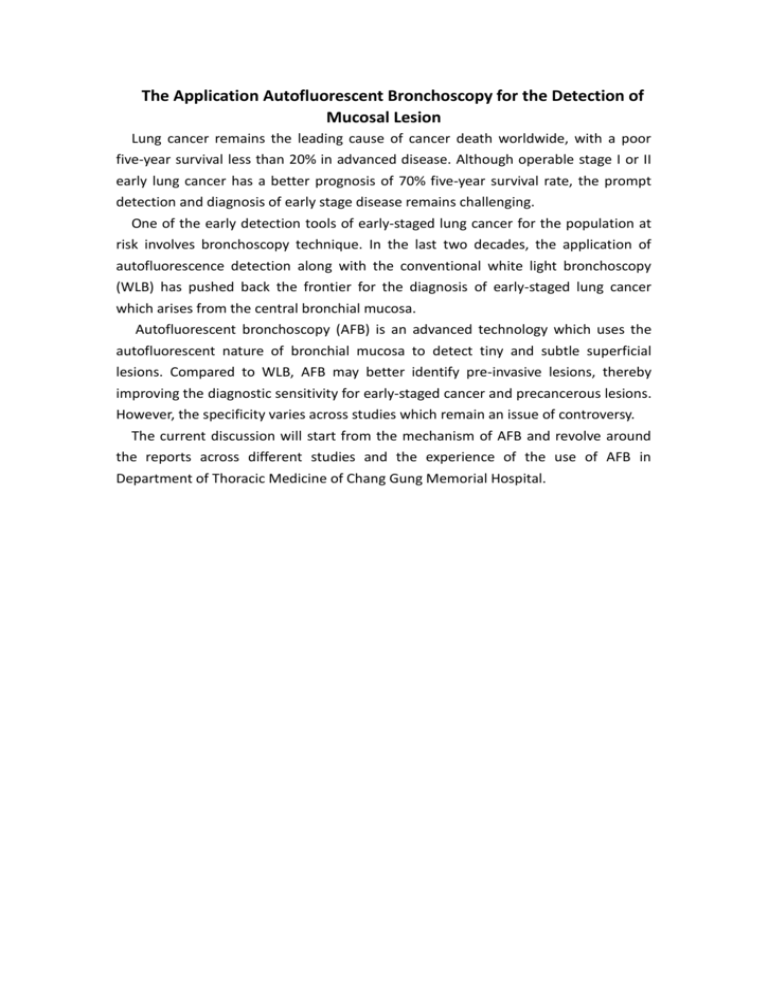
The Application Autofluorescent Bronchoscopy for the Detection of Mucosal Lesion Lung cancer remains the leading cause of cancer death worldwide, with a poor five-year survival less than 20% in advanced disease. Although operable stage I or II early lung cancer has a better prognosis of 70% five-year survival rate, the prompt detection and diagnosis of early stage disease remains challenging. One of the early detection tools of early-staged lung cancer for the population at risk involves bronchoscopy technique. In the last two decades, the application of autofluorescence detection along with the conventional white light bronchoscopy (WLB) has pushed back the frontier for the diagnosis of early-staged lung cancer which arises from the central bronchial mucosa. Autofluorescent bronchoscopy (AFB) is an advanced technology which uses the autofluorescent nature of bronchial mucosa to detect tiny and subtle superficial lesions. Compared to WLB, AFB may better identify pre-invasive lesions, thereby improving the diagnostic sensitivity for early-staged cancer and precancerous lesions. However, the specificity varies across studies which remain an issue of controversy. The current discussion will start from the mechanism of AFB and revolve around the reports across different studies and the experience of the use of AFB in Department of Thoracic Medicine of Chang Gung Memorial Hospital.
